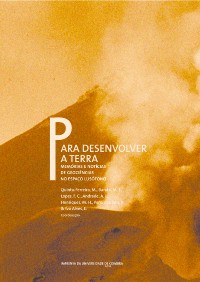Please use this identifier to cite or link to this item:
https://hdl.handle.net/10316.2/31447| DC Field | Value | Language |
|---|---|---|
| dc.contributor.author | Rodet, M. J. | |
| dc.date.accessioned | 2014-06-20T11:48:09Z | |
| dc.date.accessioned | 2020-09-18T17:20:09Z | - |
| dc.date.available | 2014-06-20T11:48:09Z | |
| dc.date.available | 2020-09-18T17:20:09Z | - |
| dc.date.issued | 2012 | - |
| dc.identifier.isbn | 978-989-26-0531-9 (PDF) | |
| dc.identifier.uri | https://hdl.handle.net/10316.2/31447 | - |
| dc.description.abstract | The landscape guides the human occupation and therefore, guides the archaeologist’s approach. Due to being something dynamic, the landscape evolution has influenced the pre‑historic (and the present) human groups. In this way, one can think about three different basic dimensions for the prehistoric period: the food resources, the deposits of raw materials and the imaginary dimension, the last one seen from the appropriation of the physical space. One can assert that at the prehistoric time the human groups depend and act over their natural environment. So, they appropriate the physical space over which they look forward to fill in their needs and, it is clear that the resource’s quality guide these cultures, that invest in this space according to their needs and resources they offer (RODET et al. 2008). | eng |
| dc.description.abstract | A paisagem condiciona a ocupação humana e, em consequência, condiciona a abordagem do arqueólogo. Sendo algo dinâmico, a evolução da paisagem tem conseqüências sobre os grupos humanos pré‑históricos (e atuais). Neste sentido, pode‑se pensar em três dimensões básicas para a pré‑história: os recursos alimentares, as jazidas de matérias‑primas líticas e a dimensão do imaginário, esta última percebida a partir da apropriação do espaço físico. Pode‑se afirmar que, na pré‑história, os grupos humanos dependem e agem sobre o seu meio natural. Neste sentido, eles se apropriam do espaço físico no qual buscam atender as suas necessidades, e é claro que a qualidade dos recursos guia estas culturas que investem neste espaço em função de suas necessidades e dos recursos que eles oferecem (RODET et al. 2008). | por |
| dc.language.iso | por | - |
| dc.publisher | Imprensa da Universidade de Coimbra | por |
| dc.relation.ispartof | http://hdl.handle.net/10316.2/24404 | por |
| dc.rights | open access | - |
| dc.subject | Landscape | eng |
| dc.subject | Deposits of raw materials | eng |
| dc.subject | Pre‑history | eng |
| dc.subject | Brazil | eng |
| dc.subject | Paisagem | por |
| dc.subject | Jazida lítica | por |
| dc.subject | Pré‑história | por |
| dc.subject | Brasil | por |
| dc.title | Geoarqueologia na bacia do rio Peruaçu (Estado de Minas Gerais, Brasil) | por |
| dc.title.alternative | Geoaechelogy in the Peruaçu River basin (Minas Gerais State, Brazil) | eng |
| dc.type | bookPart | por |
| uc.publication.firstPage | 203 | - |
| uc.publication.lastPage | 213 | - |
| uc.publication.location | Coimbra | por |
| dc.identifier.doi | 10.14195/978-989-26-0531-9_20 | - |
| uc.publication.digCollection | PB | por |
| uc.publication.orderno | 20 | - |
| uc.publication.area | Ciências Naturais | por |
| uc.publication.bookTitle | Para desenvolver a Terra: memórias e notícias de Geociências no espaço lusófono | - |
| uc.publication.manifest | https://dl.uc.pt/json/iiif/10316.2/31447/218868/manifest?manifest=/json/iiif/10316.2/31447/218868/manifest | - |
| uc.publication.thumbnail | https://dl.uc.pt/retrieve/11297159 | - |
| uc.publication.parentItemId | 52112 | - |
| uc.itemId | 71911 | - |
| item.grantfulltext | open | - |
| item.fulltext | With Fulltext | - |
| Appears in Collections: | Para desenvolver a Terra: memórias e notícias de Geociências no espaço lusófono | |
Files in This Item:
| File | Description | Size | Format | |
|---|---|---|---|---|
| 20-para_desenvolver_a_terra_artigo.pdf | 1.31 MB | Adobe PDF |  |
Items in DSpace are protected by copyright, with all rights reserved, unless otherwise indicated.
